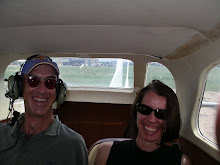Darlene Joyce Schwenk, known simply as D.J., narrates this contemporary coming-of-age romance novel. Her summer in the small town of Red Bend, Wisconsin looks to be complicated, to say the least, and she is not happy. The oldest child on the family dairy farm, she took over all of the chores after her father’s hip replacement surgery the previous January. Due to her new responsibilities, D.J. quit the school basketball team and failed her sophomore English class. She then learns that her father and a family friend, the longtime football coach at Red Bend’s archrival, Hawley, want her to spend her summer training Brian Nelson until training camp begins in early August. Handsome, spoiled Brian, the popular quarterback, is everything she is not. She resents the responsibilities given to her but lacks confidence to speak out about her situation.
The rural Wisconsin setting, typified by the Schwenk family dairy farm, plays a major role in D.J.’s story. She must awaken at five in the morning to milk the cows and run the farm. If it is her home, it is also her prison. Through all of the chores, there runs a lack of family communication. Her father cooks (but no one tells him how terrible his burnt meals are), her older brothers are estranged from her father due to some undiscussed event from last Christmas, her younger brother Curtis does not say much, and her mother is rarely around the house. Throughout the early part of
 the novel, D.J. is alone with her thoughts and her endless work, and neither is positive.
the novel, D.J. is alone with her thoughts and her endless work, and neither is positive.Football is the other important aspect of setting in this story. The Schwenks are a football family. The father played for the Minnesota Vikings when the team began, and her brothers were both legends in high school. Raised in this environment with that set of genes, D.J. is the natural choice to train Brian. Due to D.J.’s resentment and lack of confidence, and Brian’s unwillingness to do farm chores, their relationship begins poorly. However, after training and doing chores together, they become closer and even create their own football field on an isolated part of the farm. This is their secret, a symbol of their budding friendship.
Is it a relationship? D.J. hopes so but still lacks confidence, as shown in her “tongue-tied nature and self-deprecating inner monologues” (Pickett). She and Brian play together, talk, and warm up to each other in what seems to verge on a relationship. In one critical scene, D.J.’s best friend Amber interrupts them and reminds D.J. that “Guys like that don’t go out with girls like you” (158). D.J. understands that, but it is still a blow to her. She does not stand up for herself and understands what Brian means when he refers to her as a cow. Others lead life; she follows.
When D.J. decides to try out for the Red Bend football team, she begins taking control of her life and moving beyond the setting confining her. Fittingly, she leaves the farm for Madison, the state capital and more liberal university town, to have her hair cut so that it will fit inside her football helmet. When she arrives there, she sees herself as a “farm hick” (187) in the city and is afraid to tell the woman at the salon about football. The response she gets heartens her and bolsters her confidence to return to Red Bend and begin changing her life.
The football scenes are mainly serious, as D.J. tries to be accepted by her coach, teammates and opponents, and as she keeps her participation secret from her family. Lighter moments arise with the complications of locker rooms and cheerleaders. The main complication, though, is with Brian, who tells her, “When you don’t talk, you know, there’s a lot of stuff that ends up getting not said” (225).
By learning to like herself and speak honestly and openly (referred to as “Oprah moments” throughout the book), D.J. comes to understand that her lack of self-confidence stifled her, not Red Bend or the rest of the Schwenks. With her newfound understanding and confidence, she can empathize with and relate more equally to her family, her best friend Amber, and Brian. In D.J., Murdock has created a powerful character capable of reaching a wide range of readers able to understand her shortcomings and smile as she comments on them.
Reference List:
Pickett, Amy. 2006. Review of Dairy Queen, by Catherine Gilbert Murdock. School Library Journal 52(4): 145. Library, Information Science & Technology (LISTA) database, TWU Library. Accessed 3 October 2011.
HIGHLY RECOMMENDED (Grade 8 and up)
Review Excerpts:
At the end, though, it is the protagonist's heart that will win readers over. (School Library Journal, April 1, 2006)
A painfully funny novel takes readers into the head of D.J. Schwenk, frustrated dairy farmer-cum-football trainer-cum-star linebacker…A fresh teen voice, great football action and cows—this novel rocks. (Kirkus Reviews)
This humorous, romantic romp excels at revealing a situation seldom explored in YA novels, and it will quickly find its place alongside equally well-written stories set in rural areas, such as Weaver's Full Service (2005), Richard Peck's The Teacher's Funeral (2004), and Kimberly Fusco's Tending to Grace (2004). (Booklist, April 1, 2006)
D.J.'s voice is funny, frank, and intelligent, and her story is not easily pigeonholed. Readers will learn a lot about sports and farming but more about taking charge of oneself. (Voice of Youth Advocates, June 1, 2006)
Awards & Recognition:
Great Lakes Book Awards, 2007
Pennsylvania Young Reader's Choice Award, 2007-2008
School Library Journal Best Books of the Year, 2006


